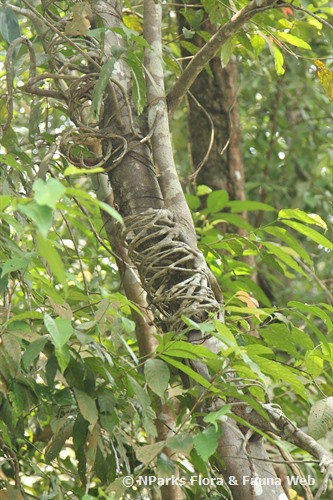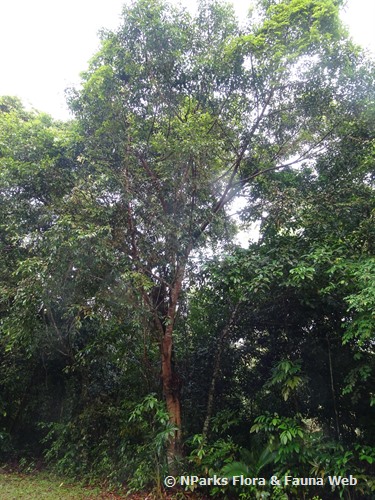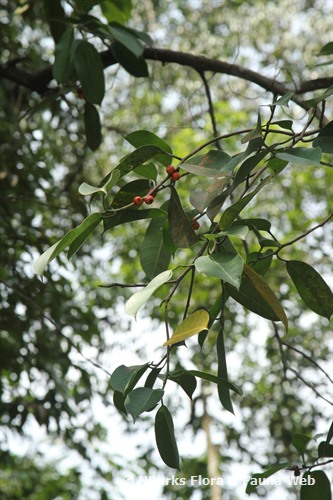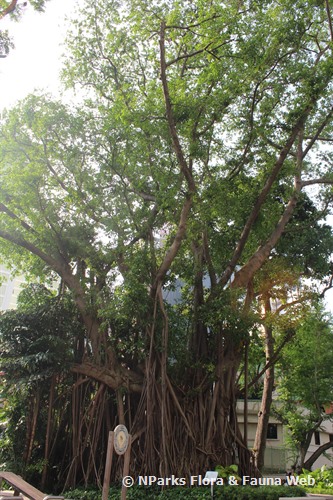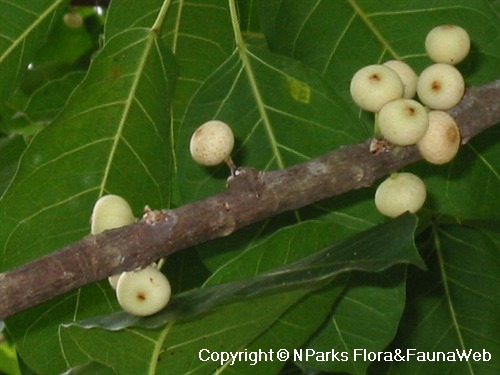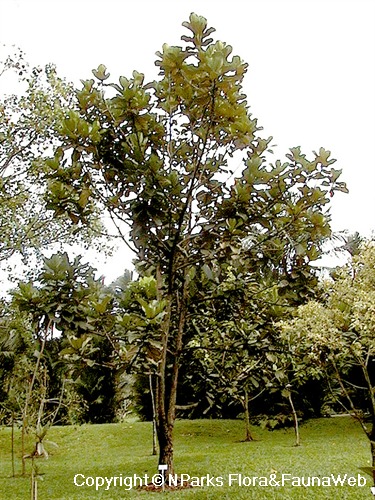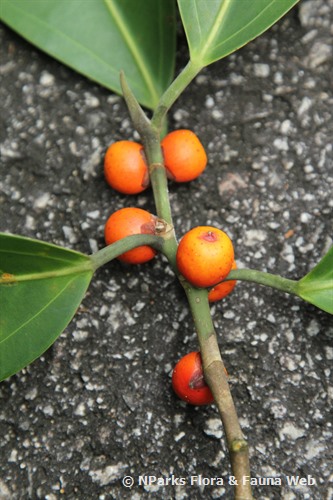
Name
Classifications and Characteristics
| Plant Division | Angiosperms (Flowering Seed Plants) |
|---|---|
| Plant Growth Form | Tree |
Biogeography
| Native Distribution | Myanmar, Thailand, Sumatra, Peninsular Malaysia, Singapore, Bangka Island, and Borneo |
|---|---|
| Native Habitat | Terrestrial |
| Preferred Climate Zone | Tropical |
| Local Conservation Status | Native to Singapore (Critically Endangered (CR)) |
Description and Ethnobotany
| Growth Form | It is an evergreen, hemi-epiphytic tree, developing a vast spreading crown and enormous basket-trunk with stilt roots in the lower part. |
|---|---|
| Foliage | Its spirally arranged, stalked leaves have leathery leaf blades that are elliptic and 7.5–22.5 by 3–11 cm, with 7–10 pairs of veins. |
| Flowers | The species is monoecious with male and female flowers borne on the same individual. Its male, female and gall flowers are found within the same syconium. The flowers are tiny and develop within the syconium. |
| Fruit | Its stalkless syconia are axillary, almost round to ellipsoid, ripening yellow then blood red, and 1.25–1.8 cm wide. |
| Habitat | Forests of islands or scrub vegetation, frequently on white sand or in swampy sites up to 1100 m altitude. It occurs locally in Nee Soon Swamp Forest. |
| Associated Fauna | Its flowers are insect-pollinated. |
| Etymology | Latin ficus, fig; Latin sundaica, from Sunda Island, probably referring to one locality in the natural distribution of this species |
Landscaping Features
| Landscape Uses | Parks & Gardens |
|---|
Fauna, Pollination and Dispersal
| Pollination Method(s) | Biotic (Fauna) |
|---|---|
| Seed or Spore Dispersal | Biotic (Fauna) |
Plant Care and Propagation
| Light Preference | Full Sun, Semi-Shade |
|---|---|
| Water Preference | Moderate Water |
| Plant Growth Rate | Moderate |
Foliar
| Mature Foliage Colour(s) | Green |
|---|---|
| Mature Foliage Texture(s) | Leathery |
Fruit, Seed and Spore
| Mature Fruit Colour(s) | Red, Yellow / Golden |
|---|
Image Repository
Others
| Master ID | 33647 |
|---|---|
| Species ID | 8061 |
| Flora Disclaimer | The information in this website has been compiled from reliable sources, such as reference works on medicinal plants. It is not a substitute for medical advice or treatment and NParks does not purport to provide any medical advice. Readers should always consult his/her physician before using or consuming a plant for medicinal purposes. |

